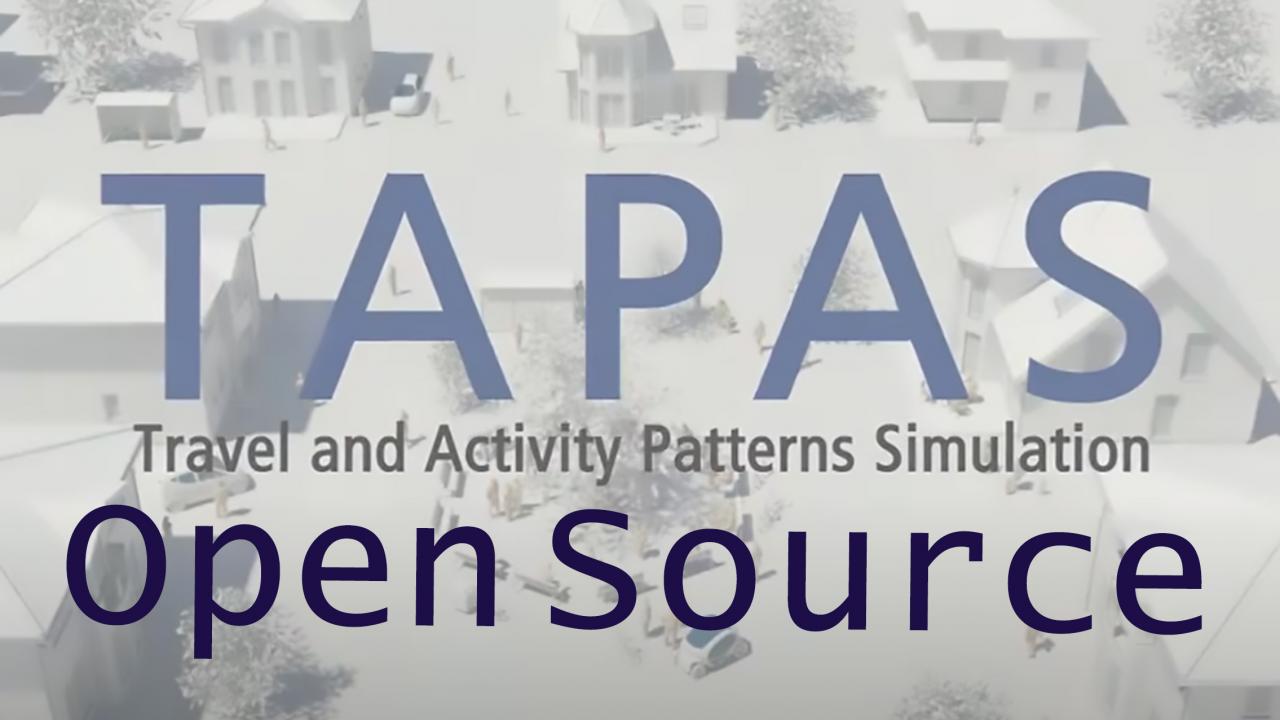
The software TAPAS developed by the DLR Institute of Transport Research for modeling the demand for passenger transport in urban areas is now available for free. The software provides an accurate picture of the passenger transport demand of a region and can be used to predict the effects of measures and changes in general conditions. The application uses socio-demographic data and information about the mobility behavior of people.
Forecasting traffic performance & traffic behavior in cities
For the period from 2010 to 2030, the German Federal Ministry of Transport and Digital Infrastructure (BMVI) expects an overall increase in passenger transport performance of 12.2 percent throughout Germany. Developments in transport performance will be uneven and there will be differences between rural regions and large cities. At the same time, a new wave of urbanization can be observed: The population in many German cities is growing and the cities are the key drivers for traffic. But what concrete changes in traffic and people's traffic behavior can be expected in urban areas? How are new mobility offers being used and what effects, for example, do measures have on daily mobility?
TAPAS enables the observation and evaluation of different changes in transport demand. Here the focus is on urban areas, since a close examination is particularly interesting here due to the diverse mobility offers. TAPAS is able to determine the effects of technical, regulatory, sociodemographic or infrastructural changes. For example, the software can be used to predict how many car drivers, cyclists or pedestrians would switch to public transport if it were available free of charge.
The differentiated picture of transport demand generated by the tool can thus be used, for example, for urban planning considerations, such as the expansion of public transport, to answer the question of promoting micromobility, or for the strategic orientation of private transport companies.
Data basis
As a microscopic model, TAPAS is based on the traffic behavior of individual persons. Empirical spatial and structural data, information on the use of time as well as information on the use of means of transport form the basis for a realistic picture of current and future demand. The data for behavioral modeling in the current version of TAPAS is taken from the representative survey on the mobility behavior of Germans in everyday life "Mobility in Germany (MiD)" from 2017. With its microscopic modeling method, TAPAS can not only predict the effects of planned measures in advance. TAPAS can also be used to investigate changes in other framework conditions. In addition, TAPAS can provide important insights into the use of innovative vehicles, fuels or mobility concepts within certain population groups.
Application
The software has already been used for several DLR research projects. For example, TAPAS has been used in the research project RENEWBILITY 1-3 "Material Flow Analysis of Sustainable Mobility in the Context of Renewable Energies until 2030" conducted by the Institute of Transport Research and the Öko-Institut. The project involved calculations on passenger transport demand for the regions of Berlin, Hamburg, Braunschweig and Main-Rhön for the year 2030 compared to 2005. From these calculations, conclusions could also be drawn about the development of traffic throughout Germany.
Other projects of the federal ministries where TAPAS was used were simulation of networking of traffic behavior with the energy sector in the ENavi project "Energiewende-Navigationssystem zur Erfassung, Analyse und Simulation der systemischen Vernetzungen" of the Federal Ministry of Education and Research (BMBF), Move Urban "Flächeneffiziente Siedlungs- und Mobilitätskonzepte in wachsenden urbanen und neuen suburbanen Quartiere" (BMBF) and RAMONA "Realisierung automatisierter Mobilitätskonzepte im öffentlichen Nahverkehr" (BMVI).
